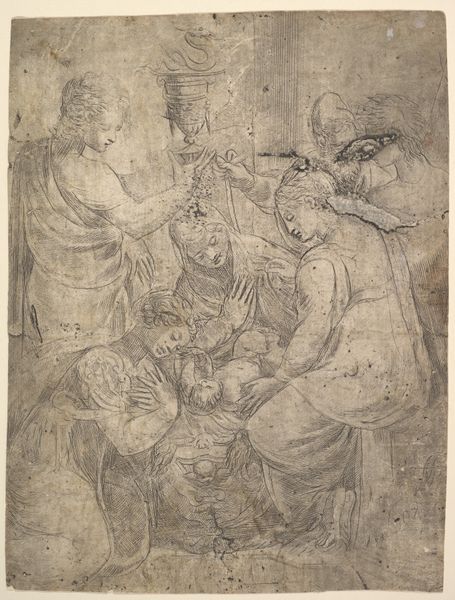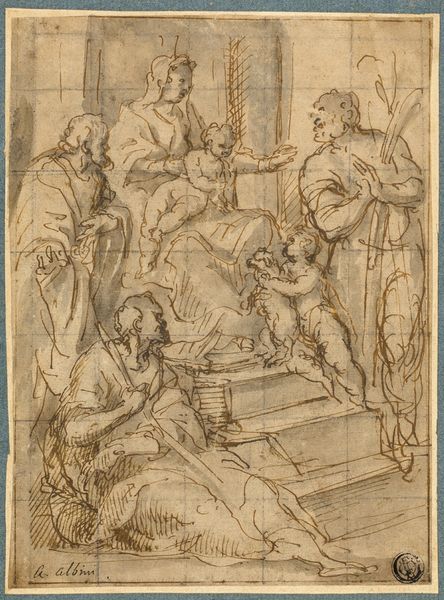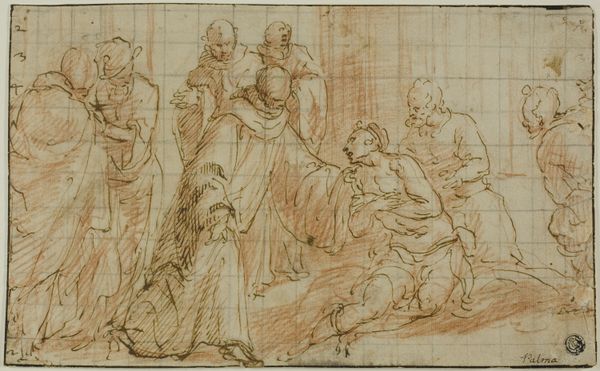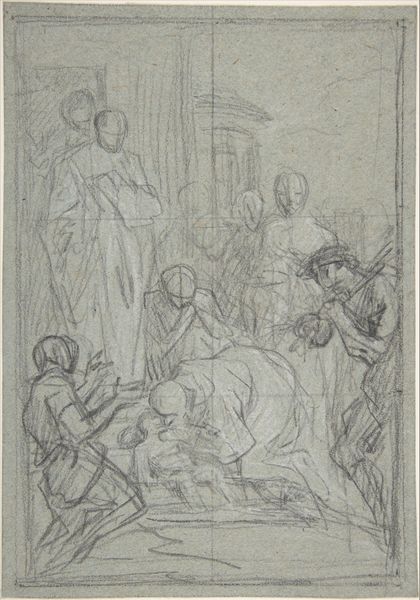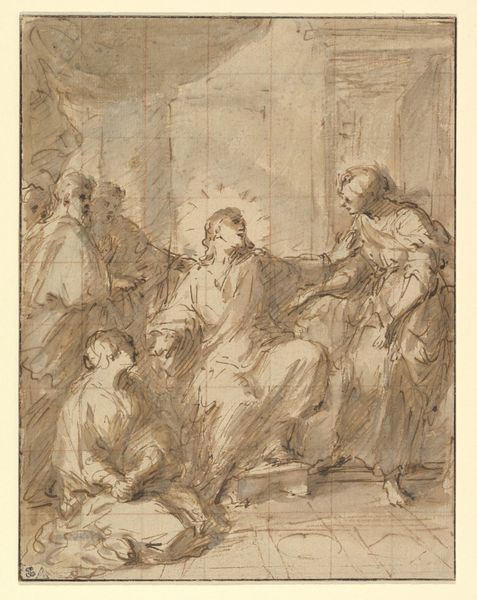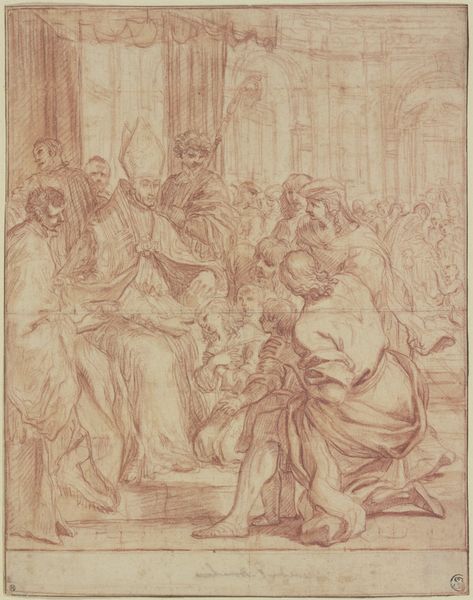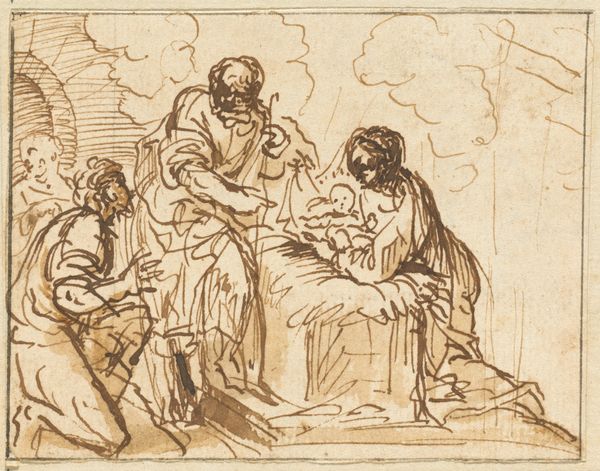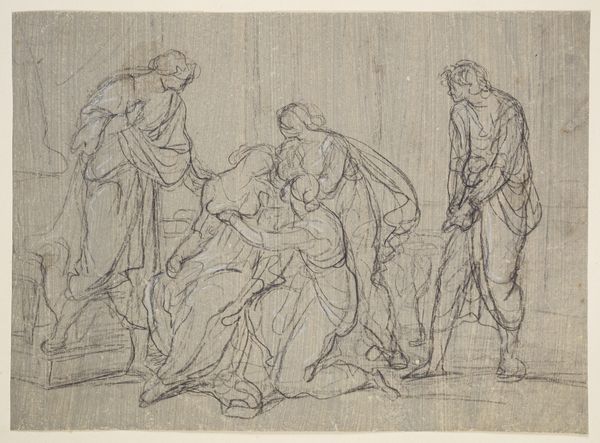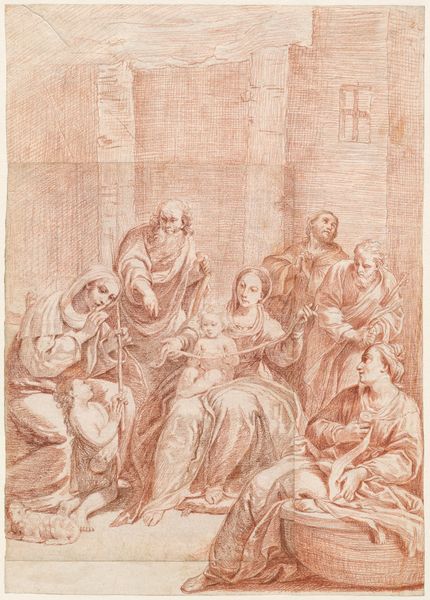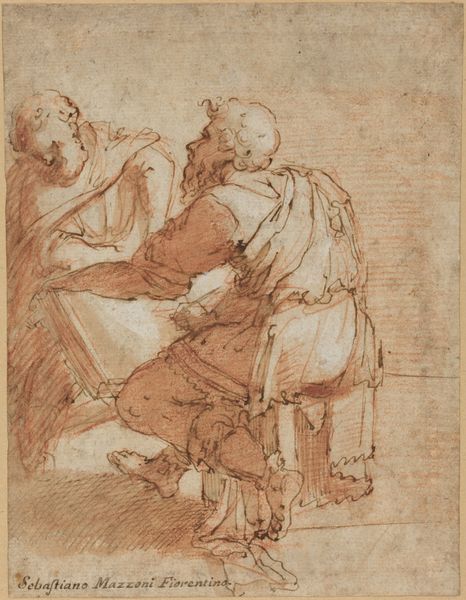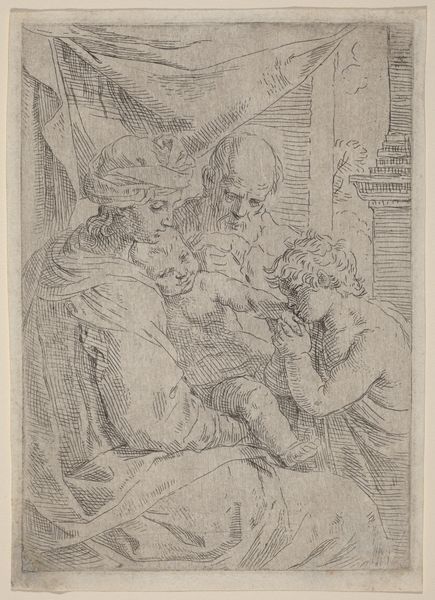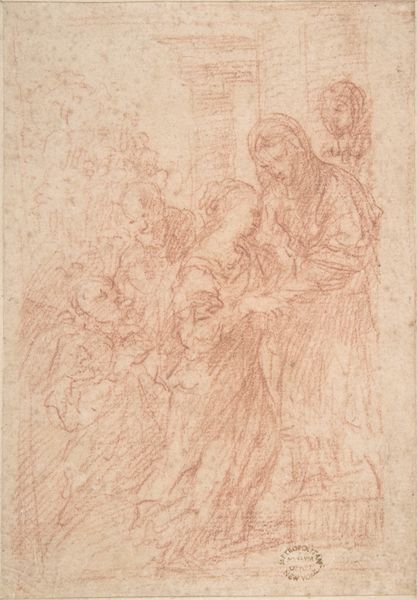
Copyright: Public Domain
Curator: This is Angelica Kauffmann's "The Blind Belisarius," a drawing created around 1781, currently residing here at the Städel Museum. Editor: It strikes me as intensely sorrowful. The subdued chalk and charcoal seem to amplify the melancholic narrative, creating a sense of muted tragedy. Curator: Indeed. Kauffmann's piece delves into the narrative of Belisarius, a celebrated Byzantine general who, despite his loyal service, was allegedly blinded and reduced to begging. The drawing captures a moment of recognition, of pity, as a former soldier recognizes his old commander. It reflects upon themes of injustice, power, and the fickle nature of fortune, issues prevalent in Kauffmann's time, particularly regarding the treatment of accomplished women artists like herself. Editor: Looking closely, one observes the careful composition; the figures are arranged to guide the eye to Belisarius’s outstretched hand, both literally and figuratively seeking aid. Note also the use of light and shadow—the way it models the drapery, emphasizing the figures’ emotional states. The soldier behind, is he shading his eyes in disbelief? Curator: Yes, the figure in armor functions as witness. This speaks volumes about how societies often discard their heroes, particularly if those heroes become inconvenient to the prevailing political structure. Belisarius becomes a symbol for anyone who’s been betrayed by the very system they served. Kauffmann herself struggled for recognition in a male-dominated art world, and one wonders if she saw parallels between her situation and Belisarius’s. Editor: The classical architecture provides a formal framework to underscore the timeless nature of the depicted tragedy. Note how it echoes a stage setting—this arrangement emphasizes the performative nature of public life and how quickly heroes can fall from grace. The deliberate positioning and the nuanced gradations create layers of visual and emotional complexity. Curator: And while it’s rooted in a specific historical moment, it certainly makes us consider broader societal power dynamics. How do we treat those who have served us, and what obligations do we have to challenge systemic injustices that lead to such falls from grace? Editor: Indeed. It's an artwork where form and content work powerfully in tandem to create a profoundly moving, and, dare I say, relevant experience for the viewer. Curator: I agree. It’s a work that resonates because it exposes a universal truth.
Comments
No comments
Be the first to comment and join the conversation on the ultimate creative platform.
